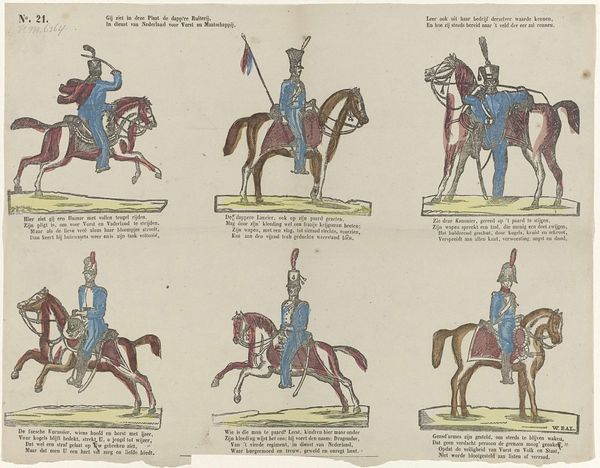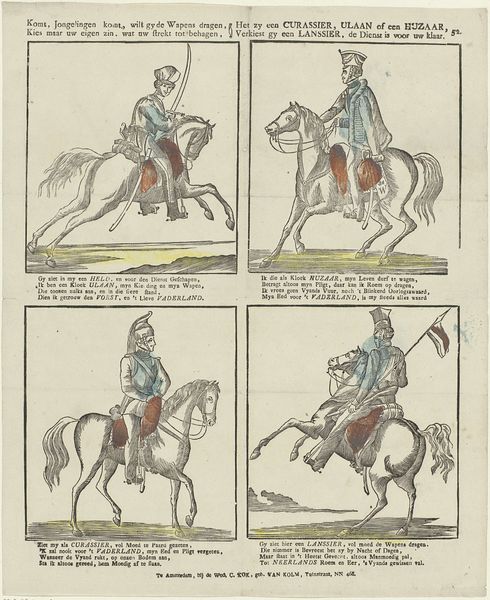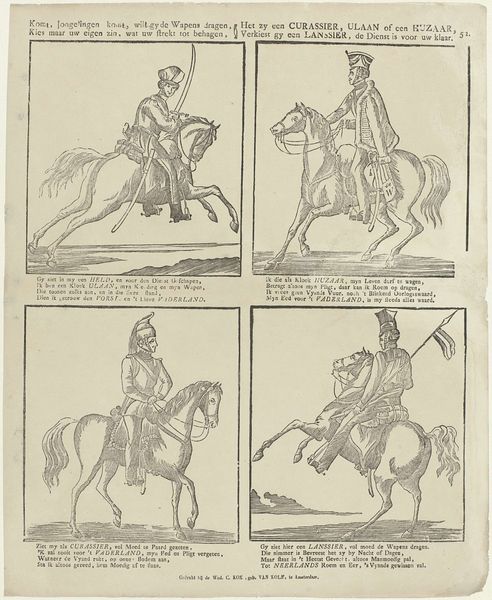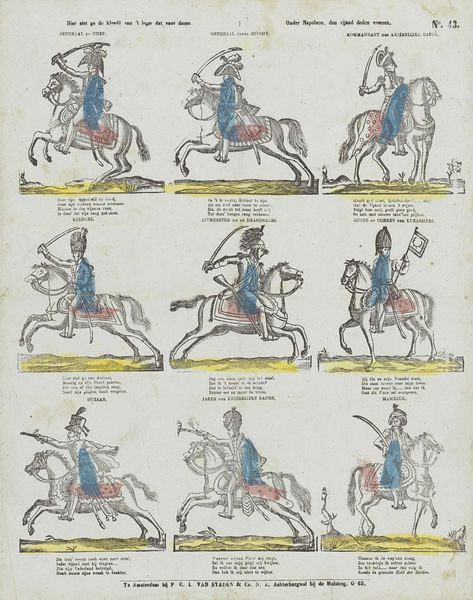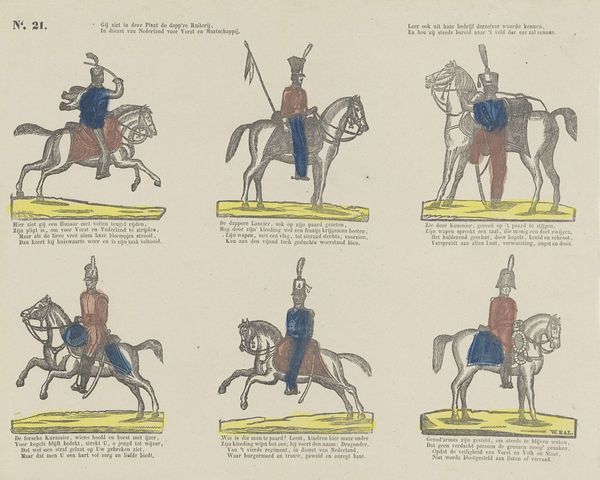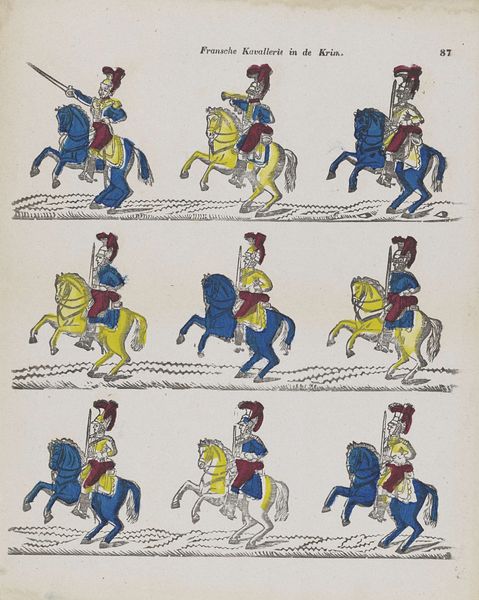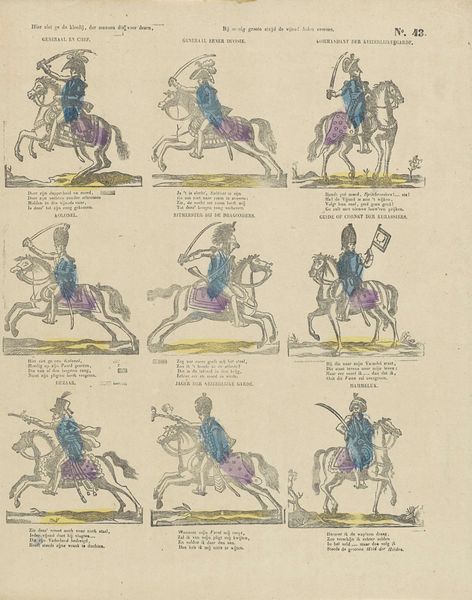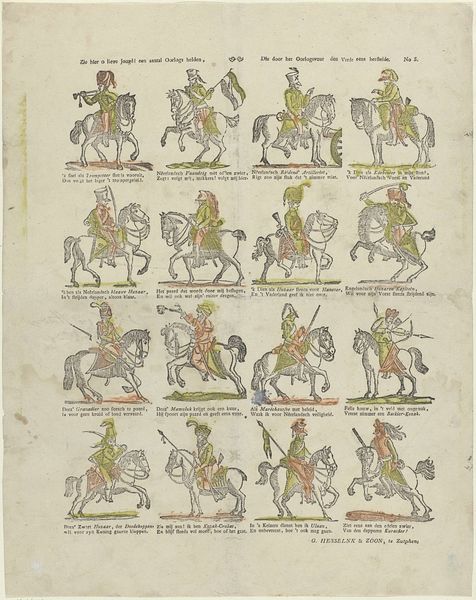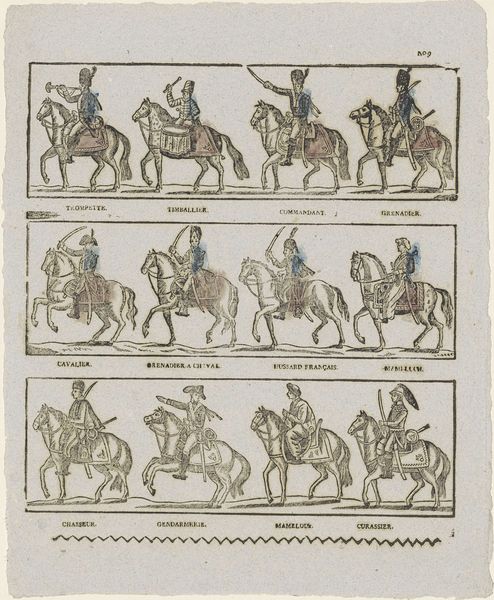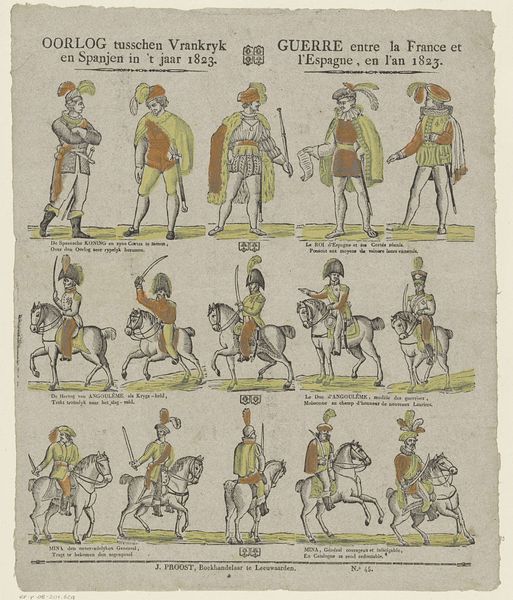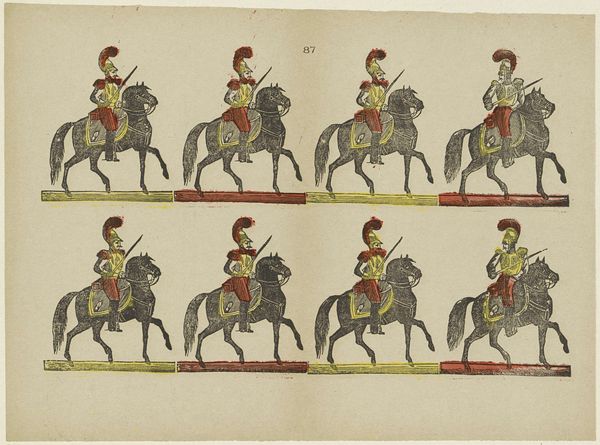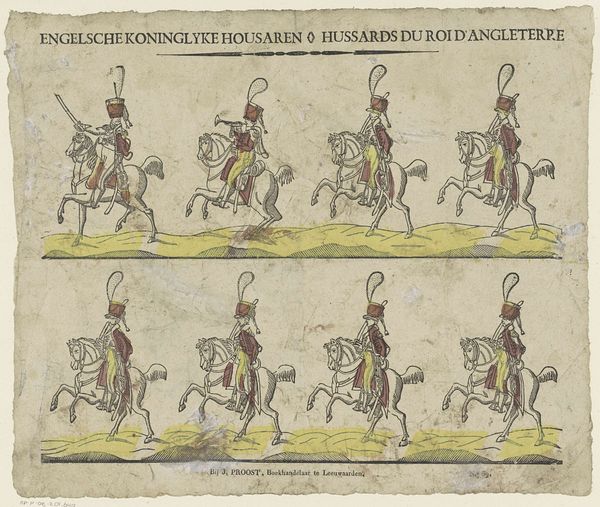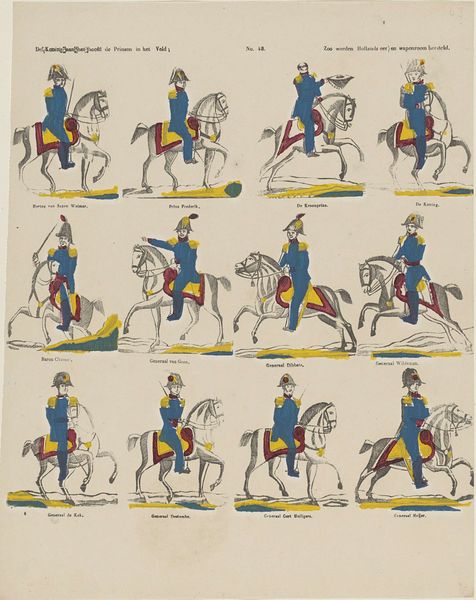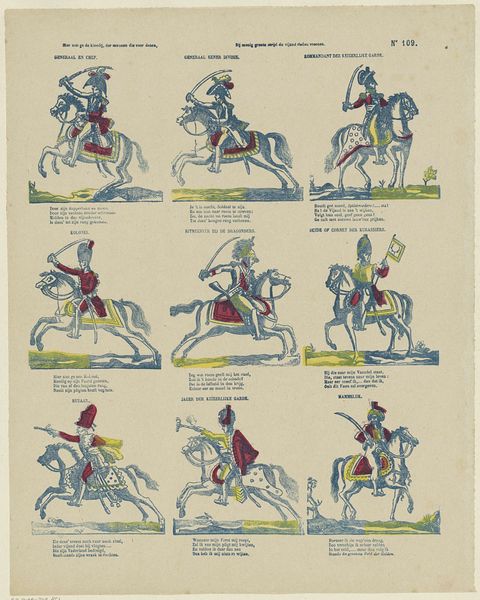![Hier ziet ge de kleedij, [der mannen die] voor dezen, / Onder Napoleon de vijand deden vreezen by P.C.L. van Staden & Co.](/_next/image?url=https%3A%2F%2Fd2w8kbdekdi1gv.cloudfront.net%2FeyJidWNrZXQiOiAiYXJ0ZXJhLWltYWdlcy1idWNrZXQiLCAia2V5IjogImFydHdvcmtzL2NjZmQwMGFhLTcxNGYtNDMyOS1iOGIxLTU4ZGZlNjExZGFjNy9jY2ZkMDBhYS03MTRmLTQzMjktYjhiMS01OGRmZTYxMWRhYzdfZnVsbC5qcGciLCAiZWRpdHMiOiB7InJlc2l6ZSI6IHsid2lkdGgiOiAxOTIwLCAiaGVpZ2h0IjogMTkyMCwgImZpdCI6ICJpbnNpZGUifX19&w=3840&q=75)
Hier ziet ge de kleedij, [der mannen die] voor dezen, / Onder Napoleon de vijand deden vreezen 1850 - 1870
0:00
0:00
pclvanstadenco
Rijksmuseum
#
comic strip sketch
#
quirky sketch
#
sketch book
#
personal sketchbook
#
sketchwork
#
thumbnail sketching
#
sketchbook drawing
#
storyboard and sketchbook work
#
sketchbook art
#
initial sketch
Dimensions: height 360 mm, width 286 mm
Copyright: Rijks Museum: Open Domain
Curator: I’m struck by the playful nature of this image. There’s almost a sense of levity, despite the subject matter of soldiers and warfare. It reminds me of a child’s paper dolls. Editor: Precisely! This is "Here you see the clothing of the men who once made the enemy fear under Napoleon," produced between 1850 and 1870 by P.C.L. van Staden & Co. Now held at the Rijksmuseum, it is far more than a child’s plaything. The ensemble is like a coded ledger recording cultural values about the military through fashion, of all things. Curator: You are absolutely right to point out the fashion aspect. The uniforms are rendered with surprising care. The high hats, the decorated saddles... there’s a clear symbolic language in the regalia and equipment, a kind of theatre. They point to a cultural memory of this military prowess from a specific era. Editor: The visual representation of martial authority and prowess always carries with it complicated historical and social baggage. Think of these soldiers as symbols that embodied not only a nation's pride and dominance, but also the sociopolitical and economic foundations of colonial expansion and capitalist accumulation during the Napoleonic Era. Curator: So what does the seemingly lighthearted style—the comic strip feel, as some of the tags call it—add to this complex context? Does it dilute the gravity, or perhaps make it more palatable, more accessible to the populace? Editor: I'd argue it's both. It packages and disseminates a nationalistic narrative but, importantly, offers an opportunity for critical reading through satire. Even now, seeing those exaggerated poses, one can read critique, even mockery. The choice to highlight uniform details over explicit displays of aggression may soften, if only a little, a commemoration of conflict with consideration. Curator: It becomes a potent symbol. The image is simple enough to be widely understood yet multilayered enough to subtly shape or challenge public opinion regarding these Napoleonic military figures and legacies. It gives form to an epoch’s psyche through deceptively plain means. Editor: A final point – its place in the Rijksmuseum suggests not just the art historical significance but its ongoing resonance with our ideas and conversations today. It is both a piece of history and a provocation, a reminder of the image's active role in how we understand the past.
Comments
No comments
Be the first to comment and join the conversation on the ultimate creative platform.
